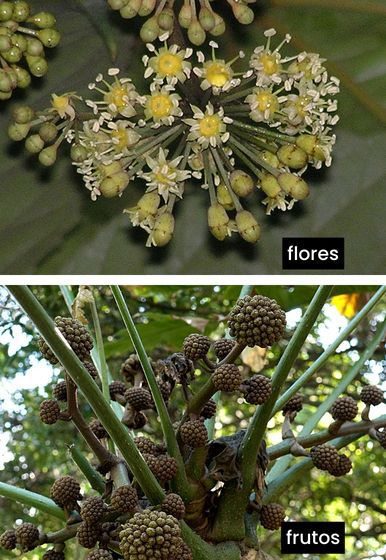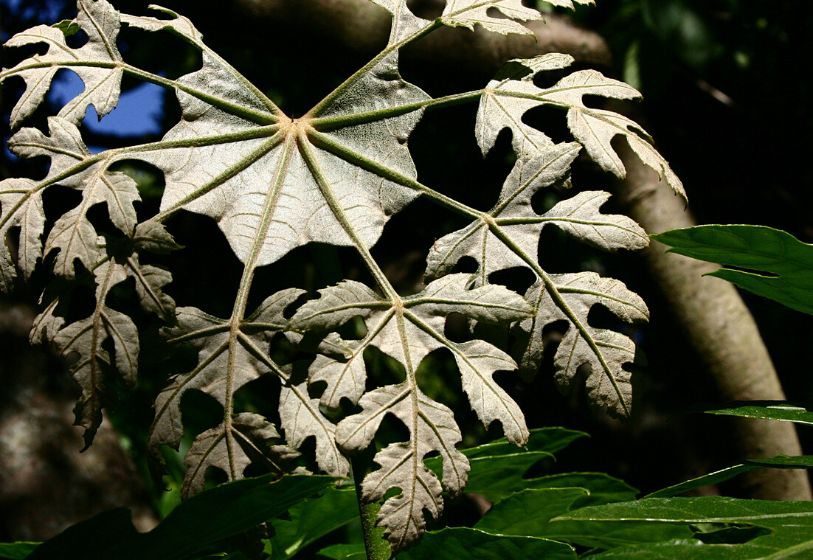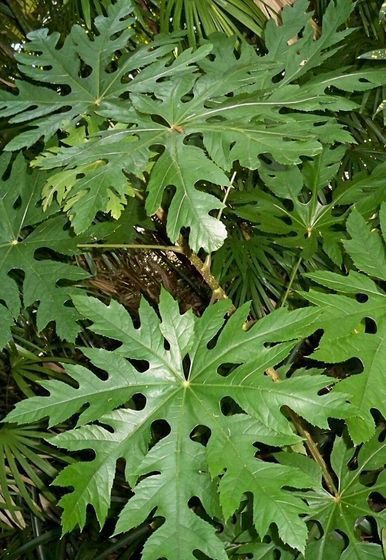
The snowflake is a tree species native to mixed forests on mountain slopes, at altitudes between 600 and 2000 meters (1968 to 6562 feet), located in southwestern Asia, including territories of China, Bangladesh, Bhutan, India, Laos, Nepal, Cambodia, Thailand, Myanmar, and Vietnam. It captures attention with its enormous palmate leaves, which subdivide into smaller lobes, resembling a leaf within another leaf or a snowflake pattern. In its habitat, it reaches about 8 meters (26 feet) in height and has a trunk diameter of 15 centimeters (5.9 inches). It exhibits little to no branching, with pubescent and spiny branches.
The leaves are evergreen, typically growing in a crown at the tips of branches, ranging from 30 to 90 cm (11.8 to 35.4 inches) in diameter. They are dark green, with spiny bases and petioles, deeply lobed into 5 to 9 segments. The lobes are connected to a plate-like area at the base of the leaf that attaches to the petiole. The lobes are ovate to lanceolate, acuminate, with a leathery texture and serrated margins. The leaf patterns seem to vary among individuals and as the plant ages, with juvenile leaves being less segmented. The inflorescence is a panicle of small globular umbels, about 5 cm (1.97 inches) in diameter, with a powdery appearance, carrying 25 to 45 perfumed flowers. There is also a cultivar of Trevesia palmata called ‘Micholitzii’ with new leaves retaining the soft white hairs that cover them and become shiny.

Although it can grow into a tree, this species is often grown as a shrub or indoor plant. It adapts well to container cultivation with filtered light from windows. In the garden, it prefers dappled shade over full sun for growth. It offers an exotic and tropical ambiance due to its shiny leaves and intricate lobed pattern. The genus name Trevesia is an homage by Italian botanist Roberto di Visiani to the Treves de Bonfili family of Padua, avid supporters of botanical research. The specific epithet palmata refers to the palmate appearance of the leaves. It’s interesting to note that besides its ornamental value, the snowflake has a medicinal reputation, and its flowers can be consumed after cooking.
It can be cultivated in full sun, partial shade, or filtered light, in fertile, deep, well-draining soil enriched with organic matter and irrigated during the initial years of establishment. Its initial growth is slow, and once well-rooted, it becomes resistant to short periods of drought. While it tolerates dry conditions, the snowflake prefers the cool, humid mountain environment and responds well to irrigation and fertilization, growing more vigorously. In hotter regions with a tropical climate, it’s advisable to plant it in locations protected by taller trees’ canopy. It can be propagated by seeds, cuttings, or air layering.


